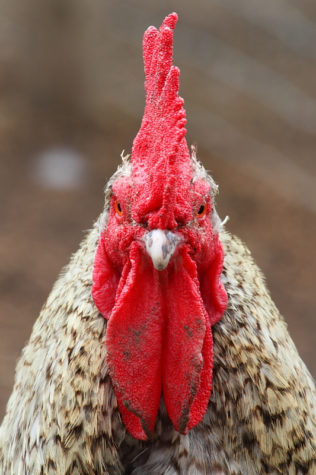 One of my favorite things about my usual writing beat (living things) is that we humans never stop learning new things about animals. We’re even still discovering species that are new to science. (Check out the glorious ruby sea dragon, previously known only from beach corpses, and Hoolock tianxing, a gibbon just determined to be its own species that, sadly, comes into its own already labeled endangered.)
One of my favorite things about my usual writing beat (living things) is that we humans never stop learning new things about animals. We’re even still discovering species that are new to science. (Check out the glorious ruby sea dragon, previously known only from beach corpses, and Hoolock tianxing, a gibbon just determined to be its own species that, sadly, comes into its own already labeled endangered.)
While “new” is good, I get most jazzed over discoveries about species we already know, or think we know. A few recent bits in the news: Dogs really do get the meaning of words, not just of the tone of voice that accompanies them (which is also cool). Macaques understand the limits of their own memory. Bats’ endless cave chatter is complex and full of bickering.
And sometimes the findings flip long-held assumptions on their heads.
Take the chicken. People began domesticating red junglefowl some 10,000 years ago, probably for cock fighting rather than food. In 2004 geneticists finished mapping the full chicken genome, and it’s actually rather complex, as is the birds’ “where did they come from, where did they go from there” story. You can read about all that good stuff in this really thorough article.
Despite the lengthy history of this well-traveled bird, it’s taken a long time for scientists to suggest chickens are brainy. And even hearing that scientists say so, it’s hard to shake the image of a chicken as a clueless neck-jutting seed pecker. Chickens are rarely given the benefit of the doubt. No one goes to a chicken for advice. No one expects a chicken to do its own taxes. Chickens babble a lot while saying very little. Or so we thought.
Here’s what a new research review in the journal Animal Cognition, tells us. In brief: Chickens have personalities. They have self control when it comes to food (a better morsel is coming? I’ll wait!), and they can assess their spot in the barnyard pecking order (both signs of self awareness). Note that deductive reasoning, which chickens use, is something we humans develop around age seven. These birds also have a sense of numbers: They can discriminate between amounts and get the idea of ordinality (putting quantities in a series). Plus they do simple addition and subtraction (so, they could do their own taxes…and I’ll bet they’d release them to the public!).
There’s more. Chickens have a sense of object permanence (the concept that something still exists even if its out of sight), which it takes time for human infants to figure out. They perceive time intervals and can look ahead to future events.
Then there’s communication. Chicken squawk contains more than meets the ear. It includes 24 distinct “calls” that truly convey information to the flock, including, potentially, “there’s danger afoot.”
To spread the credit around, pigs and goats are also quite bright. Even cows, despite that glassy stare and tendency to drop meadow cakes where they’ll be stepping later, think about stuff. They get excited when they solve problems, having “eureka” moments of a bovine sort.
I’m sharing the latest chicken findings (and mentioning other barnyard smarties) because not everyone sees “chicken brains” as click bait. I want to get the news out because, unfortunately, the way we treat animals often depends on whether we believe they are “ like us” or not. As science catches up with what some of us already believe, I put a fist in the air in victory…and try to spread the word.
So, add another name to the growing list: Chickens are more like us than we ever expected.
Photo from Wikimedia Commons
I just raised 32 “meat chickens” and I can attest to their ability to learn new things. For instance, they learned how to drink out of little nozzles, they learned how to go in and out of their chicken tractor [with solar door] for night time safety. They tilled the pasture in which they were free to roam during daytime hours eating anything they pleased. They learned to eat out of a hopper I built that keeps their feed cleaner, and always available. They learned all of these activities very quickly. They managed to be safe even though they were only protected by an 8000 volt electric fence, and a scarecrow that looked as if it were moving by virtue of many mirrors dangling from it. This is in the face of having 4 bears, 4 raccoons, 1 fisher, four coyotes, and red tailed hawks in the vicinity.
Follow the chicken
https://www.youtube.com/watch?v=jre-aMAgP5I
How could anyone exposed to animals not know this already?
True, it’s not scientific fact until it’s checked out. The sun does not “rise.”But still, how could we be surprised?
Thank you, Fred. That video was funny, not ha-ha funny, but a “look at _that_! Ain’t that funny” kinda funny. Love getting a peek into the lives of “bird of paradise” like him.